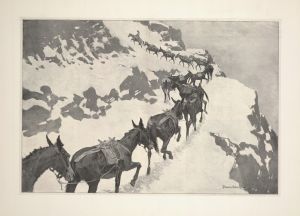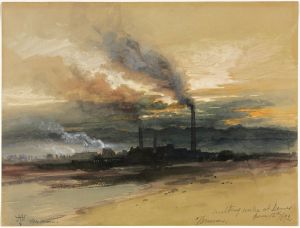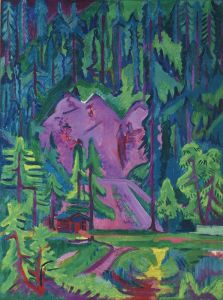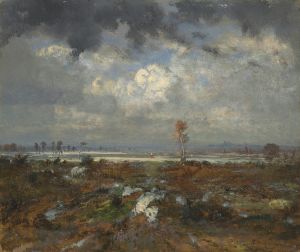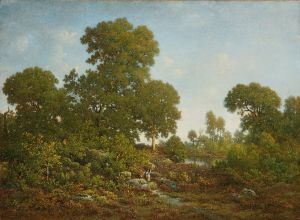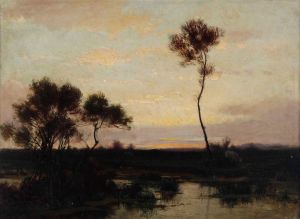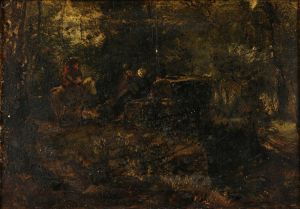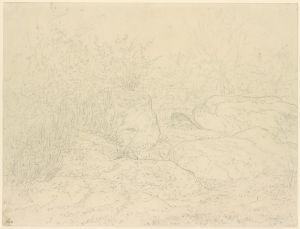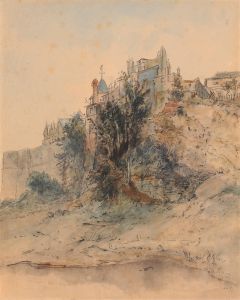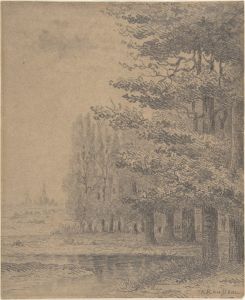
A Quarry
A hand-painted replica of Théodore Rousseau’s masterpiece A Quarry, meticulously crafted by professional artists to capture the true essence of the original. Each piece is created with museum-quality canvas and rare mineral pigments, carefully painted by experienced artists with delicate brushstrokes and rich, layered colors to perfectly recreate the texture of the original artwork. Unlike machine-printed reproductions, this hand-painted version brings the painting to life, infused with the artist’s emotions and skill in every stroke. Whether for personal collection or home decoration, it instantly elevates the artistic atmosphere of any space.
Théodore Rousseau was a prominent French painter associated with the Barbizon School, a movement that emerged in the mid-19th century. This group of artists is known for its focus on natural landscapes and its departure from the classical traditions of academic painting. Rousseau, in particular, is celebrated for his detailed and atmospheric depictions of the French countryside.
"A Quarry" by Théodore Rousseau is one of his notable works, although specific details about the painting, such as its creation date and current location, are not widely documented. Rousseau's oeuvre typically captures the serene and sometimes rugged beauty of nature, often highlighting the interplay of light and shadow across varied terrains. His works are characterized by a meticulous attention to detail and a deep appreciation for the natural world, which is evident in the way he renders trees, rocks, and skies.
Rousseau's technique often involved plein air painting, a method where artists paint outdoors to capture the immediate effects of light and atmosphere. This approach was revolutionary at the time and laid the groundwork for later movements such as Impressionism. In "A Quarry," Rousseau likely employed this technique to convey the textures and forms found in a quarry landscape, emphasizing the raw and unrefined beauty of such a setting.
The Barbizon School, named after the village of Barbizon near the Forest of Fontainebleau where many of these artists gathered, was instrumental in shifting the focus of art from historical and mythological subjects to the natural world. Rousseau, along with contemporaries like Jean-François Millet and Camille Corot, sought to depict the landscape with sincerity and truthfulness, often infusing their works with a sense of tranquility and reverence for nature.
Rousseau's influence extended beyond his lifetime, as his dedication to capturing the essence of the natural world inspired future generations of artists. His work, including pieces like "A Quarry," reflects a pivotal moment in art history when the depiction of everyday scenes and landscapes gained prominence and respectability.
While specific information about "A Quarry" is limited, Rousseau's broader body of work provides insight into his artistic vision and the themes he explored. His paintings often evoke a sense of timelessness and invite viewers to appreciate the subtle beauty of the natural environment. Through his art, Rousseau contributed to a greater appreciation of landscape painting and helped pave the way for modern artistic movements that celebrate the natural world.
In summary, Théodore Rousseau's "A Quarry" exemplifies the artist's commitment to capturing the essence of nature through detailed and atmospheric landscapes. Although detailed records of this specific painting are scarce, Rousseau's legacy as a leading figure of the Barbizon School and his influence on subsequent art movements remain significant. His work continues to be celebrated for its beauty, technical skill, and profound connection to the natural world.





